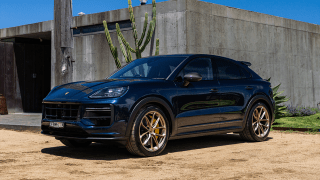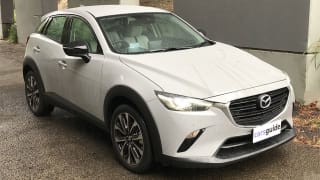Kermit the Frog famously serenaded us all with the sentiment that "it's not easy being green", but the times, unlike Kermit's ageless and fuzzy physical features, they are a changing.
In 2023, it's definitely a lot easier to be green, especially when it comes to the type of car you choose to drive.
The rise in electric vehicles means the age of zero-emissions transport is finally here, providing a means to cut down on the 36.8 billion tonnes of carbon dioxide that's released into the Earth's atmosphere every year.
While EVs paint a bright, eco-friendly motoring future, there's still a lot of catching up to do in terms of EV-charging infrastructure, which is unfortunately not quite where it needs to be yet, at least Down Under.
The desire among drivers for green transport is undoubtedly high, but infrastructure, especially in Australia, is scrambling to keep up, leaving people in a pickle.
It's an especially serious issue in a country as massive as Australia, which is 32 times the size of the UK. Since there are vast distances to travel, an EV may not be the most practical solution.
So what is the answer for people who have ‘range anxiety', aka the fear that they'll run out of battery power before they get to a charging station, thus leaving them stranded?
Well, that simple solution is what's called a Plug-in Hybrid EV (PHEV), a hugely clever vehicle that gives you the green option of a battery-powered electric motor, attached to a reassuringly familiar back-up plan — because it's actually backed up by a hybrid petrol engine.
This means you can drive around in all-electric EV mode, happily not spending money on costly fuel nor releasing harmful emissions, and yet rest easy and anxiety free while doing so, knowing that if the vehicle's battery runs out of juice, the hybrid petrol engine will kick in and take over, ensuring you'll always be able to get where you're heading (refuelling stops are still vastly more common than EV chargers).
The average daily commute for Australians is 33km, meaning that any PHEV with an all-electric driving range above that number is capable of getting you where you need to go on a typical week day, without having to ever lean on the vehicle's ICE.
The Mitsubishi Outlander Plug-In Hybrid EV has got you covered and then some, with a class-leading* all-electric driving range of 84km - more than enough to cater for that average daily commute while still having a whole lot left over for your next trip. And that means you can run in EV mode and only recharge your battery a few times a week.
Mitsubishi's research shows that drivers of its Outlander Plug-In Hybrid EV travel in EV Mode a huge 84 per cent of the time they're behind the wheel, meaning that, for the vast majority of journeys, they're able to keep it entirely green.
Since plug-in hybrids are designed and developed to be cars for all types of occasions, EV Mode isn't the only drive mode on offer.
An SUV like the Mitsubishi Outlander Plug-In Hybrid EV, for example, also has Series Hybrid Mode, where the petrol engine can be used to generate additional power while the vehicle runs on electric motor power when accelerating or climbing hills.
There's also Parallel Hybrid Mode, where the Outlander runs on engine power while being assisted by the electric motor for instances involving high-speed driving, like overtaking a car on a highway.

The magic behind the Outlander Plug-In Hybrid EV's stellar all-electric driving range is a powerful 20kWh lithium-ion battery pack, which powers twin electric motors, with the car delivering outputs of 185kW and 450Nm.
While the Outlander Plug-In Hybrid EV can easily be charged using a public EV charger or at-home charger, both of which typically use electricity from the grid, those who want to go the extra green mile can, of course, install solar panels at home, meaning they can then charge their Outlander on free, bountiful energy derived from sunshine. No panels? No problem. A plug-in hybrid can just as easily be recharged from any regular power point.
But speaking of free energy: the Outlander Plug-In Hybrid EV is also equipped with regenerative braking, an ingenious technology that is able to capture kinetic energy generated by the car when it slows down or stops and then redirect it to the battery pack for future use.
And what about that all-important hybrid petrol engine back-up?
The Outlander Plug-In Hybrid EV has a 56-litre fuel tank, which is 11 litres more than the outgoing model, and the fuel in that tank powers a 2.4-litre direct injection engine.
Along with the 20kWh battery pack, this gives the car an impressive combined petrol-electric driving range of hundreds of kilometres - which is music to the ears of anyone who wants to be both green and able to travel lengthy distances.
So while we don't want to disrespect everyone's favourite amphibian Muppet, it really is easy being green, especially when you're able to take advantage of an electric vehicle that, mercifully, comes with a hybrid petrol engine back-up to get you out of any pickles (also green) that you may find yourself in. Simple.




.png)




Comments